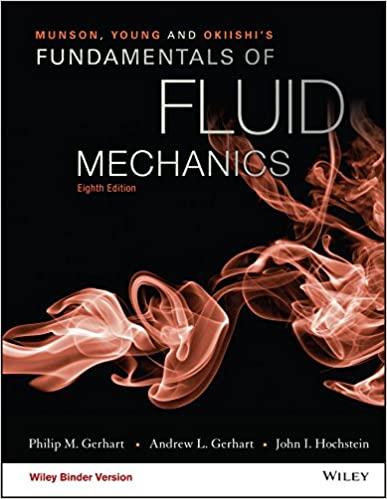Use the values of viscosity of air given in Table B. 4 at temperatures of (0,20,40,60,80), and
Question:
Use the values of viscosity of air given in Table B. 4 at temperatures of \(0,20,40,60,80\), and \(100{ }^{\circ} \mathrm{C}\) to determine the constants \(C\) and \(S\) which appear in the Sutherland equation. Compare your results with the values given in Problem 1.67. Rewrite the equation in the form
\[ \frac{T^{3 / 2}}{\mu}=\left(\frac{1}{C}\right) T+\frac{S}{C} \]
and plot \(T^{3 / 2} / \mu\) versus \(T\). From the slope and intercept of this curve, \(C\) and \(S\) can be obtained.)
Table B. 4

Problem 1.67
For air at standard atmospheric pressure the values of the constants that appear in the Sutherland equation are \(C=1.458 \times 10^{-6} \mathrm{~kg} /\left(\mathrm{m} \cdot \mathrm{s} \cdot \mathrm{K}^{1 / 2}\right)\) and \(S=110.4 \mathrm{~K}\). Use these values to predict the viscosity of air at \(10^{\circ} \mathrm{C}\) and \(90^{\circ} \mathrm{C}\) and compare with values given in Table B. 4 in Appendix B.
Step by Step Answer:

Munson Young And Okiishi's Fundamentals Of Fluid Mechanics
ISBN: 9781119080701
8th Edition
Authors: Philip M. Gerhart, Andrew L. Gerhart, John I. Hochstein




